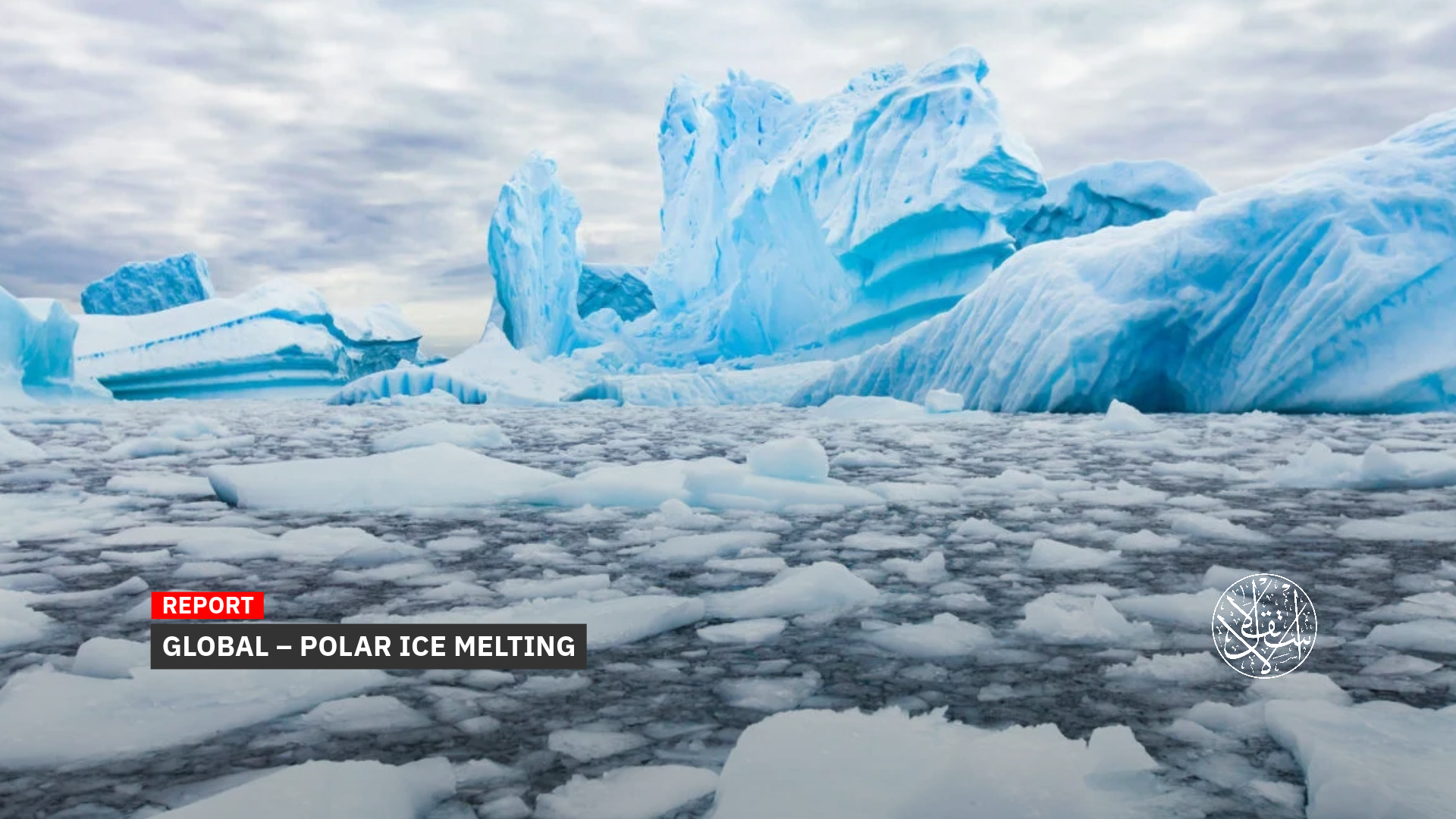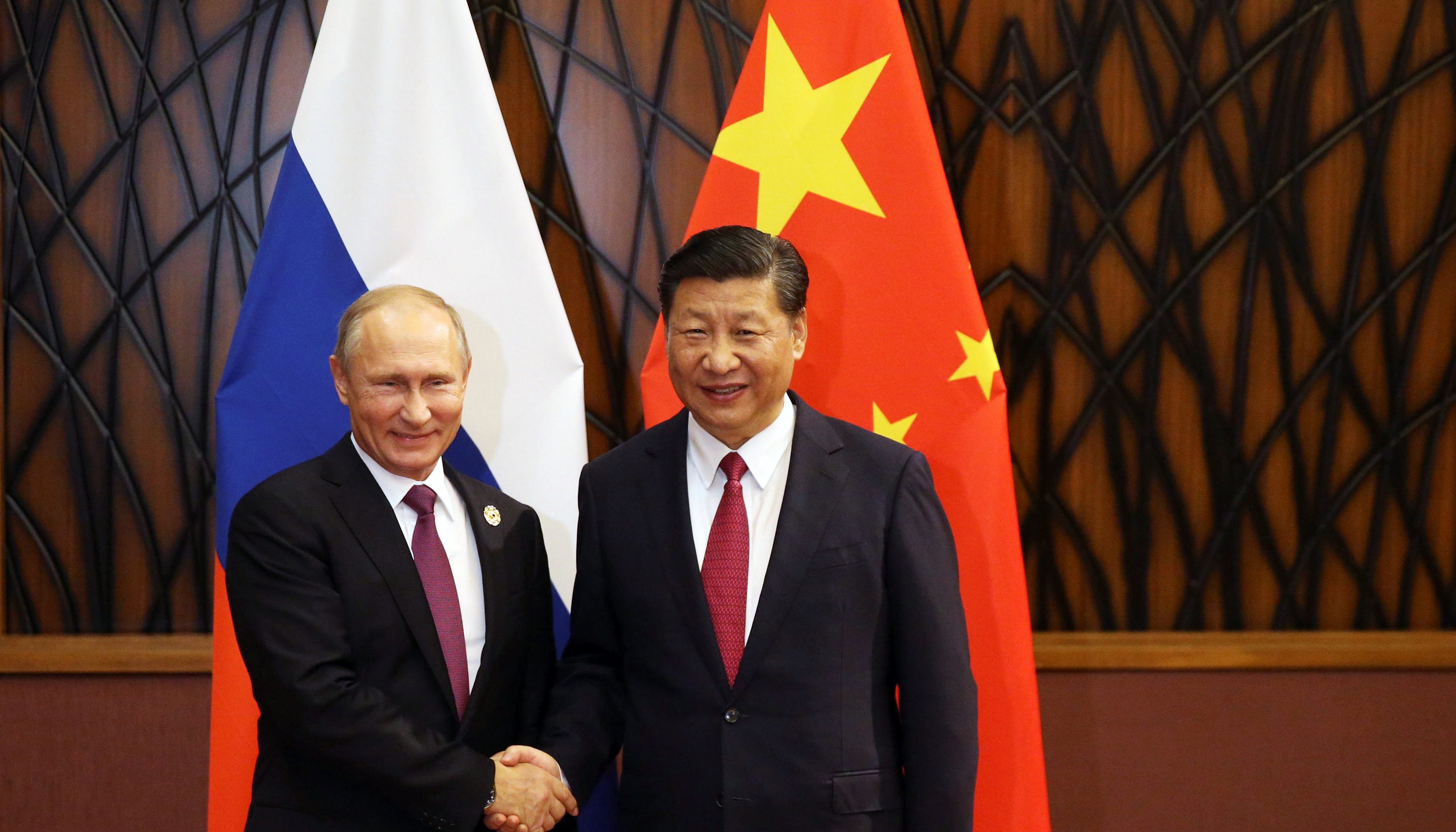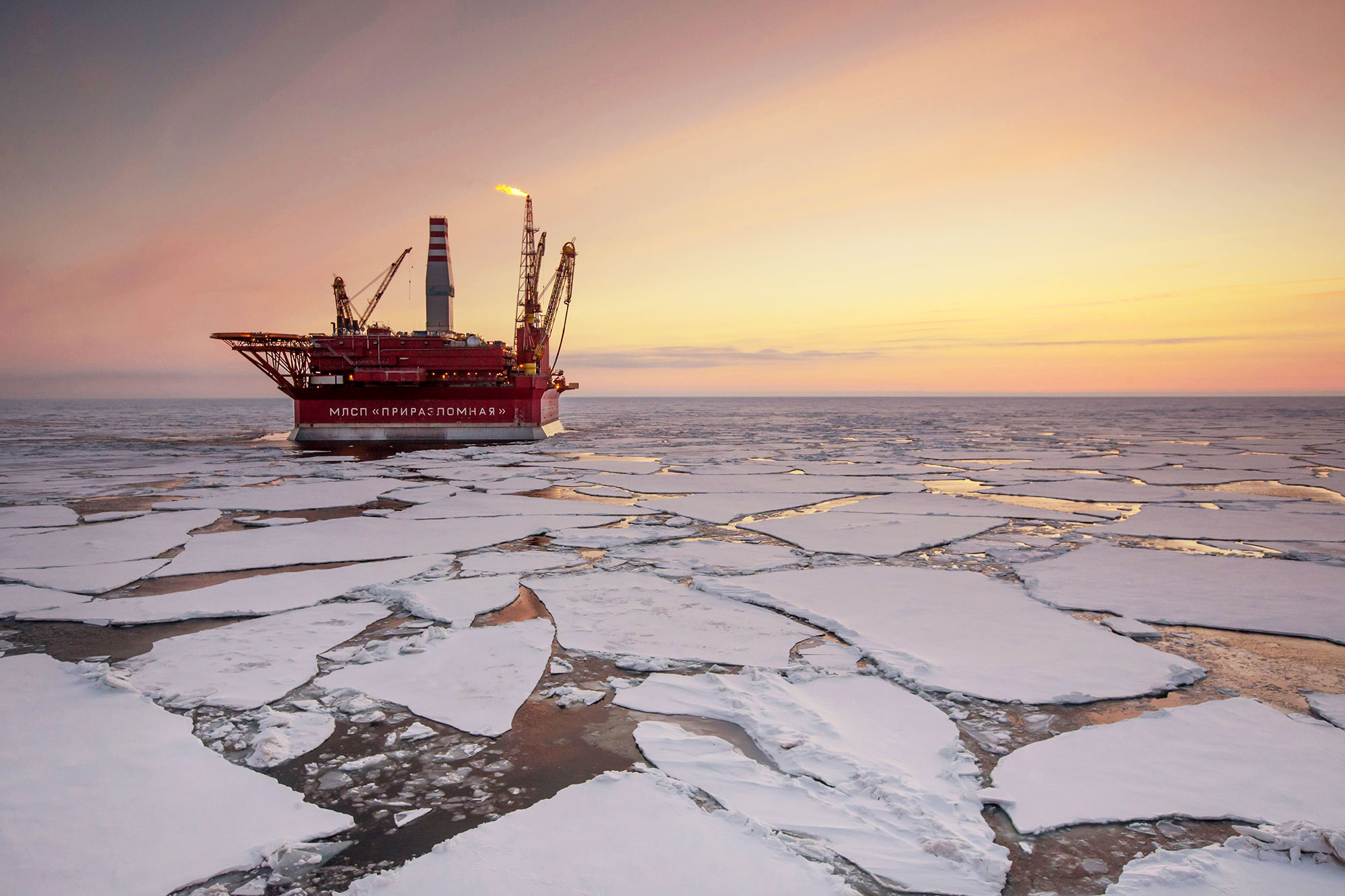Will the Polar Ice Melting Ignite a Competition Between Major Powers?

As the world grapples with the consequences of climate change, the polar regions are facing unprecedented challenges and opportunities.
The melting of ice and glaciers in the Arctic and Antarctic has led to more frequent and severe ice collapses, threatening the fragile ecosystems and global sea levels.
At the same time, the opening of new trade routes and the discovery of vast natural resources have sparked fierce competition among major powers, especially Russia, China, and the United States, for influence and control in these strategic areas.
Natural Disaster and Opportunity
The Guardian reported that experts are unsure whether the ice collapses are natural or human-induced, or a combination of both.
However, they agree that rising temperatures and changing ice conditions are the main factors behind this phenomenon.
Ariaan Purich, a climate scientist at Monash University and an expert in Antarctic Sea ice, explained to The Guardian that losing sea ice has multiple impacts on the environment.
She said that sea ice reflects solar energy back into space, regulates ocean circulation, and protects land ice from wave erosion.
Without it, she warned, the ocean would warm up faster, the global distribution of oxygen and nutrients would be disrupted, and the land ice would slide into the sea more quickly, raising sea levels worldwide.
While the polar regions are facing environmental threats, they are also becoming arenas for economic and geopolitical rivalry.
CNBC reported that Russia has been pursuing military and economic dominance in the Arctic, where it could access $35 trillion worth of oil and gas reserves
China has also announced its ambitions to develop a “Polar Silk Road” through the region, taking advantage of the new sea lanes and economic opportunities created by global warming.
The Wall Street Journal reported that the United States is trying to counter these moves by increasing its presence in the Arctic, deploying more icebreakers, and monitoring Moscow’s and Beijing’s activities via satellites and drones.
However, this competition could have serious environmental consequences, as unsustainable exploitation of these resources could cause irreversible damage to the polar ecosystems and accelerate the effects of climate change, according to experts.
The American newspaper reported that U.S. military officials do not expect China to deploy large forces in the Arctic, but they said that China shares satellite and electronic information with Russia in the region.
Russia has a clear advantage over the United States in terms of icebreakers, having 30 of them compared to America’s one.
The polar regions are at a critical juncture, where their fate will depend on how the world responds to climate change and how the major powers manage their interests and conflicts in these areas.
The stakes are high for both the environment and international relations.

New ‘Cold’ War
Some policy experts have dubbed this competition a “new Cold War,” but unlike the previous one, this one is taking place in a frigid environment.
One of the main drivers of this rivalry is the potential for trade and energy development in the Arctic.
Russia, which has the longest coastline in the region, has invested heavily in building and operating icebreakers, seaports, and liquefied natural gas (LNG) facilities along the Northern Sea Route, a maritime corridor that runs from Europe to Asia along Russia’s northern shore.
The route offers a shorter and cheaper alternative to the traditional Suez Canal route, saving up to 40 percent of distance and fuel costs.
Russia claims that it has the right to regulate and charge fees for the use of the route under the Arctic Treaty, which grants coastal states jurisdiction over their exclusive economic zones up to 200 nautical miles from their shores.
However, the United States and other countries dispute Russia’s claims, arguing that the Northern Sea Route is an international waterway that should be open to all ships without interference or fees.
The U.S. has also expressed concern about China’s growing presence and influence in the Arctic, as Beijing has declared itself a “near-Arctic state” and pursued various economic and scientific projects in the region, such as building research stations, investing in infrastructure, and participating in joint ventures with Russia.
China’s interest in the Arctic is partly driven by its ambition to create a Polar Silk Road as part of its broader Belt and Road Initiative, a global network of trade and investment that aims to connect Asia with Europe, Africa, and beyond.
The Arctic is not only a source of economic opportunity but also a potential flashpoint for military conflict.
The region is home to vast reserves of oil, gas, and minerals, as well as strategic locations for missile defense and surveillance systems.
The United States, Russia, and China have all increased their military presence and activities in the Arctic, conducting exercises, testing weapons, and deploying assets such as submarines, aircraft carriers, bombers, and satellites.
The risk of accidental or intentional escalation is high, especially as the region lacks clear rules and mechanisms for cooperation and conflict resolution.

New Playground
Russia has more at stake in the Arctic than any other country. It has the longest coastline in the region, spanning more than 4,000 miles from Norway to Alaska. It also has more than half of the world’s icebreakers, ships that can break through thick ice sheets. These assets give Russia an advantage in navigating and exploiting the Northern Sea Route (NSR), a maritime corridor that runs along its northern shore.
The NSR is a key component of Russia’s economic and strategic plans. It offers a shorter and cheaper alternative to the traditional Suez Canal route, saving up to 40 percent of distance and fuel costs. It also allows Russia to export its vast reserves of natural gas, which account for nearly 20 percent of the world’s total.
In 2023, Russia opened the Yamal LNG facility, a $27 billion project that produces and ships liquefied natural gas from the Arctic to Europe and Asia. The facility, which was partly financed by China, is expected to produce 16.5 million tons of LNG per year by 2024.
China’s interest in the Arctic is partly driven by its ambition to create a Polar Silk Road as part of its broader Belt and Road Initiative, a global network of trade and investment that aims to connect Asia with Europe, Africa, and beyond.
China sees the Arctic as a potential source of resources, markets, and influence. It has invested in various economic and scientific projects in the region, such as building research stations, financing infrastructure, and participating in joint ventures with Russia and other countries.
China has also sought to expand its diplomatic and legal presence in the region, joining the Arctic Council as an observer state in 2013 and publishing its first white paper on Arctic policy in 2018.
China’s involvement in the Arctic has raised concerns among some countries, especially the United States.
The U.S. views China as a strategic competitor and a potential threat in the region. The U.S. worries that China could use its economic leverage or military power to challenge or undermine the existing order and norms in the Arctic.
The U.S. also questions China’s intentions and transparency in the region, accusing it of pursuing its own interests at the expense of others.











